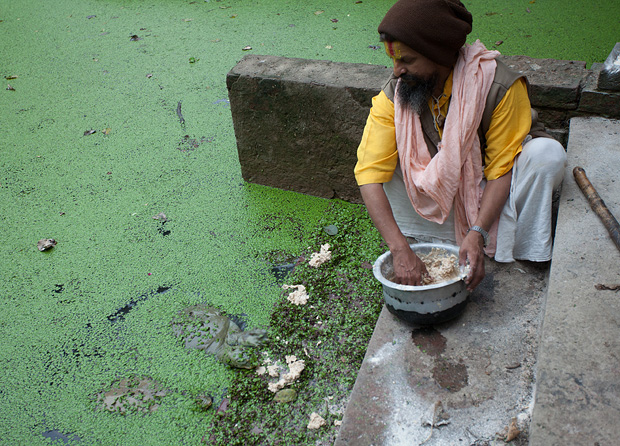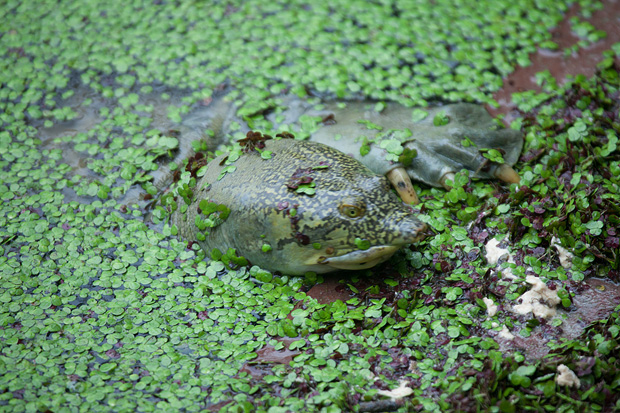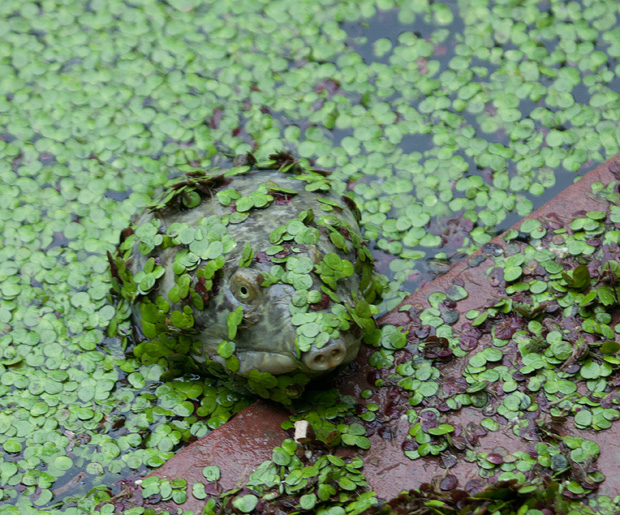I got down from the train at Agra Fort on a cold November morning and took a bus towards Bharatpur. Somewhere just after crossing Agra and driving past the villages and fields, I suddenly saw three mammals sprinting away and crossing the road quickly ahead of the bus. I could not see them clearly and thought it may be cows, but they were too fast for cows and had a more slender and agile body. Was it some kind of a deer that roamed free in unprotected areas like villages and farmlands? It seemed unlikely. How often in India do you see wild animals living far away from the forests and getting integrated with human habitat? I kept wondering what they are for a long time until I wandered into Keoladeo National Park.
Those were Blue Bulls or Nilgai. There were plenty of them in the small protected region of the park and perhaps a few roamed freely in the region around it. I do not know if these animals had learned to live with humans or were forced into it due to loss of habitat, but it was surprising to find them so far away – about 40km from Bharatpur. I doubt if there was any other forest land in the vicinity that would have given them shelter.
Though Nilgais are in large numbers in Bharatpur, they wander far and wide into the marshes and are not always seen close to the park roads. I did not see even one of them on my first day in the park and saw them from a distance on the second. However, on my last morning in the sanctuary, this fine fellow came closer to the shore and allowed me to take a few pictures.
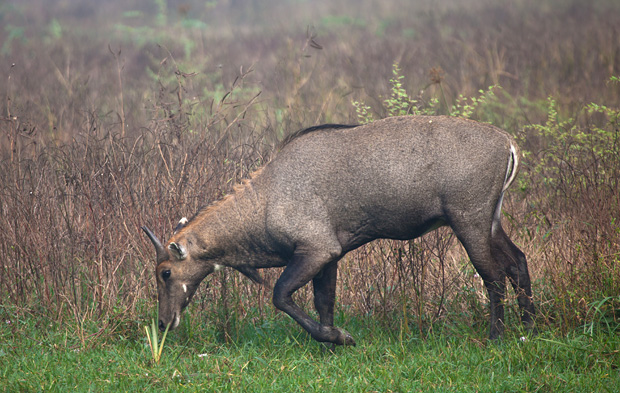
Marshes perhaps make up for more than half the area of Keoladeo National Park in Bharatpur. Naturally, the park has a lot of birds that rely on the abundance of this water. Cormorants and darters come here to fish and so do grey herons and egrets. Black Necked Storks and Painted Storks take pleasure in filtering out algae in the water and consuming them for breakfast. The storks are voracious eaters who seem to be always in a hurry to eat more, as if fearing that their neighbours may take away a portion of the food. Grey Herons stand perfectly still until an unsuspecting fish passes next to them. A microsecond later, the fish is struggling between the beaks of the heron and a few second later disappears in its throat.
I once saw a Grey Heron catch a huge fish almost six inches long and about three inches wide. The heron tried hard to consume it, but it turned out too big and eventually had to put it away. As it tried hard to gulp the fish, a greedy pond heron and a night heron walked up to it without daring to get too close, staring at the fish with a hopeful look!
The large birds were too wary of anyone and preferred to sit as far from land as possible. Even the ones that came closer to edge of the marsh kept a careful look and flew away at the first sight of someone approaching. Some pictures here.
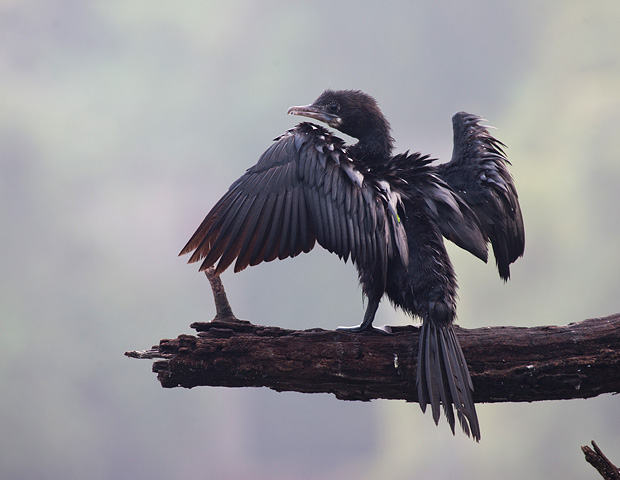
Little Cormorant
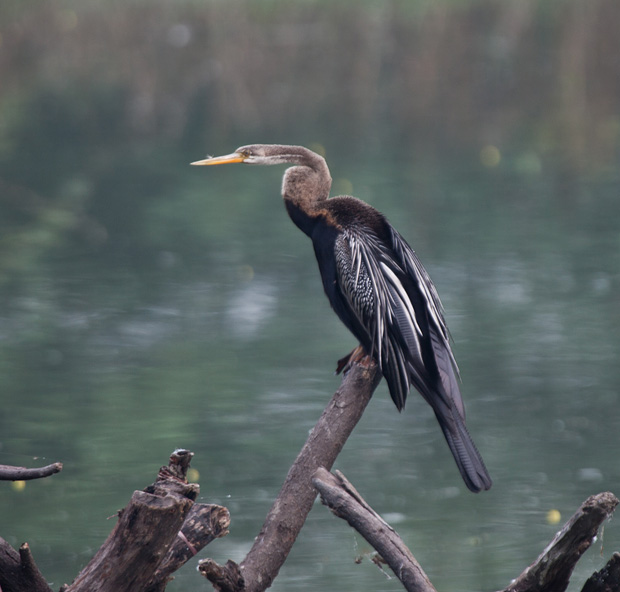
darter
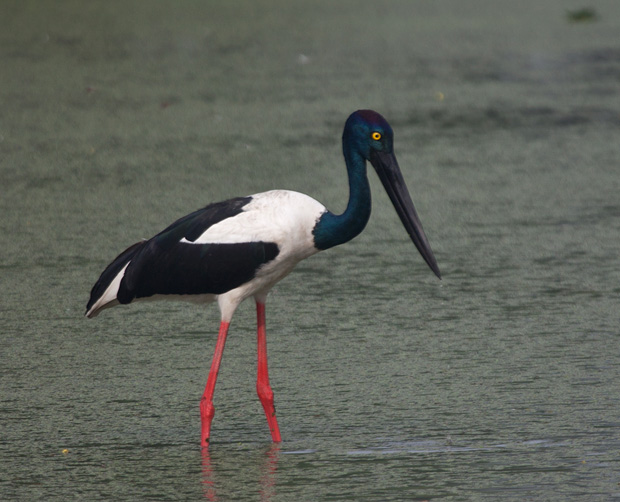
Black Necked Stork
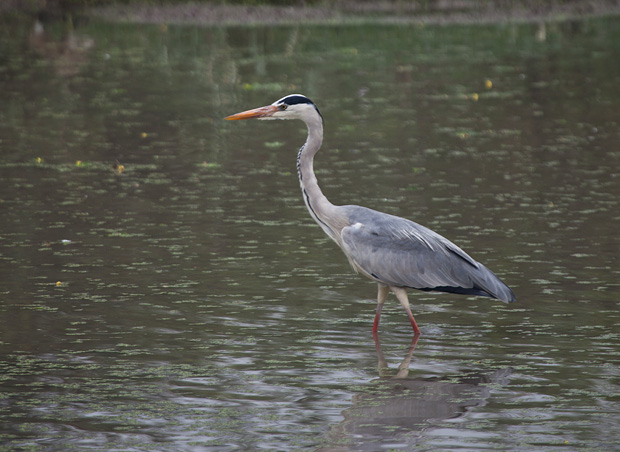
Grey Heron
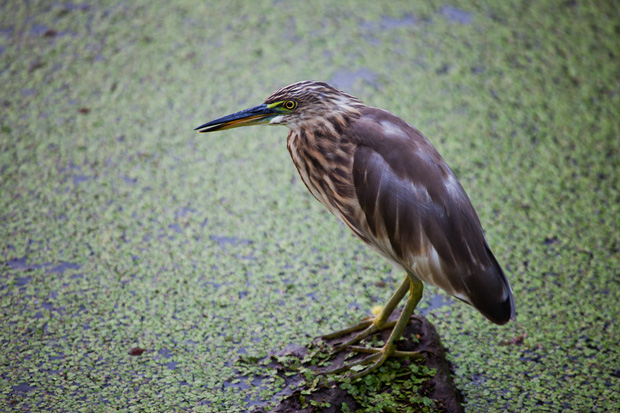
Pond Heron
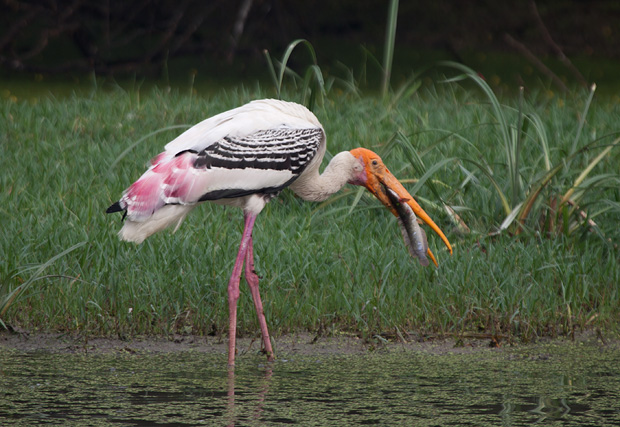
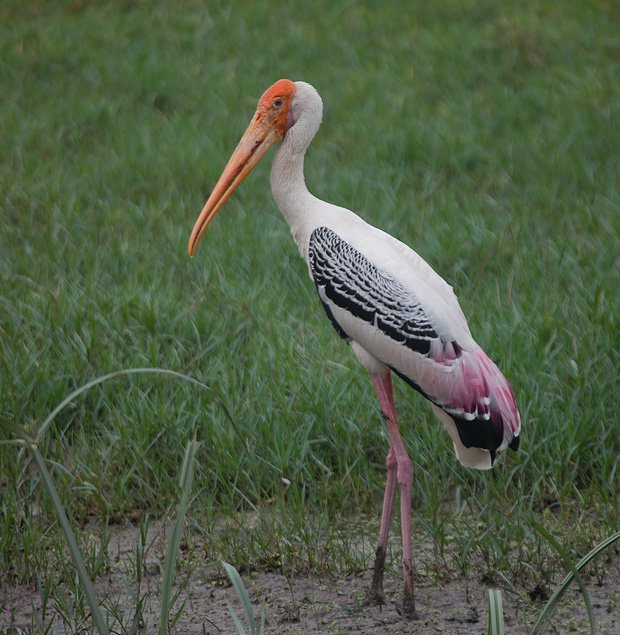
Painted Stork
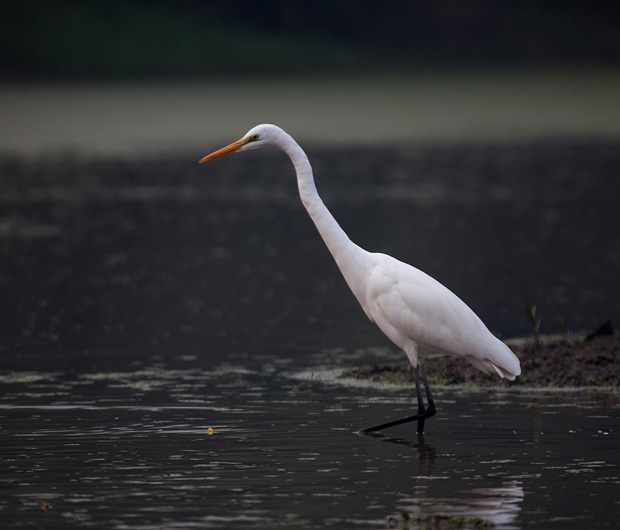
Great Egret
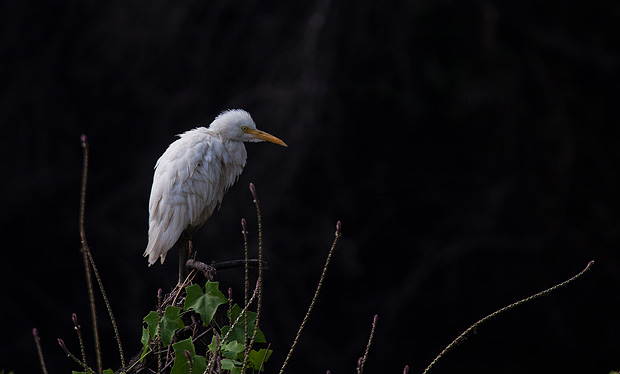
Cattle Egret
Turtles in the swamp were one of the highlights of my trip to Bharatpur. Soon after returning from Bharatpur, I wrote an article on Harmony Magazine about life in the park. Here is an excerpt on turtles.
“The large water body makes an ideal habitat for flap-shell turtles that gently swim just below the water surface. I kept seeing a dark and dome-like thing moving slowly in the water for two full days, never getting a chance for a face-to-face encounter with the owners of these shells.
It is only after three days that I found an easy way to get a good look at them, thanks to the generosity of Seetaram Baba. Baba lives at the Hanuman Temple in a corner of the park, located next to a deeper part of the marsh. He has been feeding the turtles for many years now and has become such good friend with them, they respond instantaneously when he calls them. One of the evenings when I was there, Baba took a vessel full of dough and took us to the waters. As we watched standing on the steps leading to the pond, he started calling them “aa.. aa.. aa..”. In just a few seconds, I saw something move slowly in the water. A small snout and two tiny eyes popped up next to the steps. It was soon followed by another one and another one, all of them coming out in a characteristically turtle-like sluggishness. They fed on the wheat balls slowly and cautiously, coming out of the water only for a short while to take a gulp before disappearing again. They looked gentle and harmless, but Baba told me that they can collectively tear apart any animal that makes the mistake of getting into the water.”
